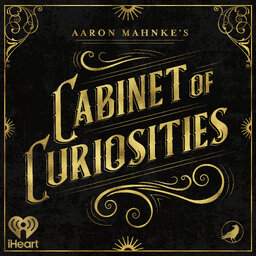The Groupie
Some people welcome limitations as a way of testing their prowess and endurance. Others have those constraints forced upon them. This tour through the Cabinet will give us a glimpse of both kinds of people.
Learn more about your ad-choices at https://www.iheartpodcastnetwork.com
 Aaron Mahnke's Cabinet of Curiosities
Aaron Mahnke's Cabinet of Curiosities


